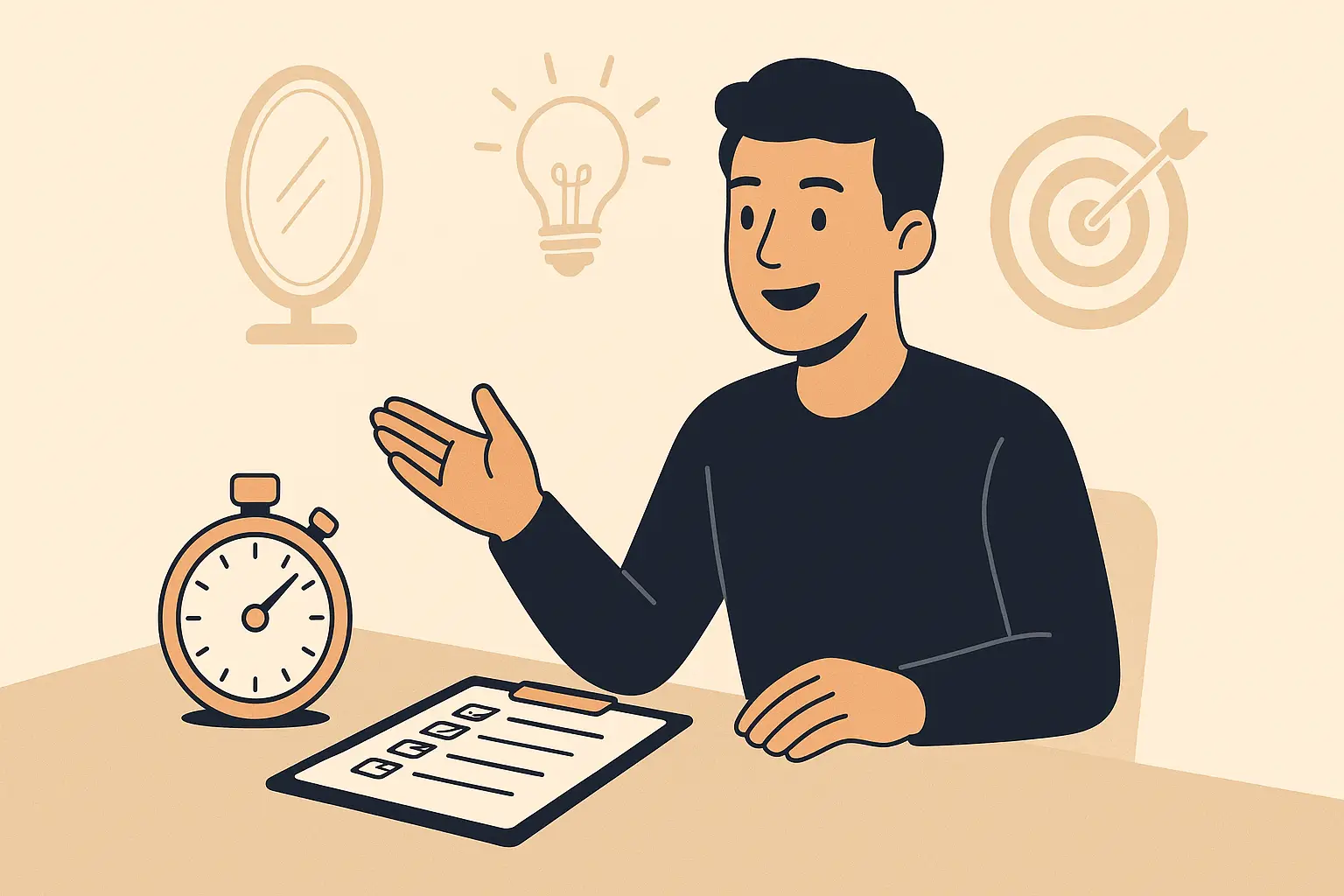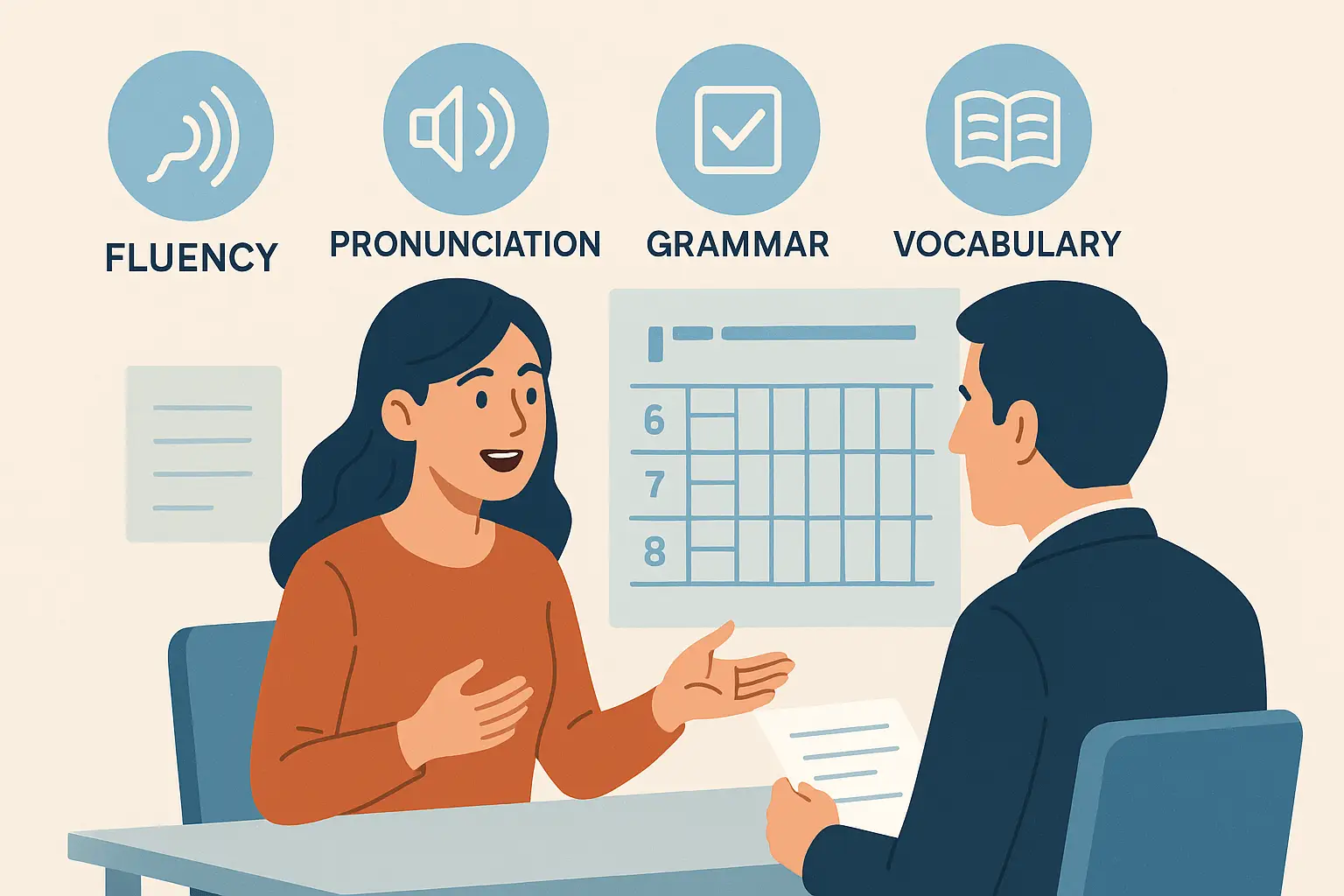- What Exactly Is IELTS Speaking Part 2?
- Why Students Struggle with the 2-Minute Task
- My 4-Step Strategy to Speak Fluently for 2 Minutes
- Cue Card Fluency in Action: A Real Student Example
- How to Extend Your Cue Card Answer Without Waffling
- Use This Daily Cue Card Routine
- Want a Complete Roadmap?
- FAQ: IELTS Speaking Part 2 Cue Card
As an international IELTS teacher, one of the most common challenges I hear from my students is this: “How can I keep talking for two full minutes in Part 2 without running out of things to say?”
If you’re asking the same question, you’re not alone.
The IELTS Speaking Part 2 Cue Card can feel intimidating at first, especially if English isn’t your first language. But with the right strategy, structure, and mindset, fluency becomes achievable—even natural.
In this post, I’ll walk you through how to approach Part 2 with confidence, using real classroom insights, proven tips, and techniques I teach to learners around the world.
What Exactly Is IELTS Speaking Part 2?
Let’s start with the basics. In Part 2 of the IELTS Speaking Test, the examiner hands you a cue card that looks something like this:
Describe a memorable trip.
You should say:
– where you went
– when you went there
– what you did
And explain why it was memorable.
You get 1 minute to prepare, and then you must speak for up to 2 minutes.
This part of the test is designed to assess your ability to speak fluently, develop your ideas, and organise your thoughts logically. If you’re not prepared, it’s easy to freeze, repeat yourself, or stop too early.
Why Students Struggle with the 2-Minute Task
Here’s what I often hear from my students:
- “I finish in 40 seconds and don’t know what else to say.”
- “I panic and forget my vocabulary.”
- “I speak too fast and run out of content.”
- “I worry I’ll go off-topic.”
Does that sound familiar?
In my experience, the problem usually isn’t lack of knowledge—it’s lack of structure and strategy. That’s where my simple framework comes in.
My 4-Step Strategy to Speak Fluently for 2 Minutes
1. Understand the Cue Card Deeply (Don’t Just Skim It)
Spend 10–15 seconds reading each line of the cue card slowly. Highlight the verb and the time frame. For example, if it says “Describe a time when you received good news”, ask yourself:
- What was the news?
- Who told you?
- What was your reaction?
- How did it affect your life?
This is what I call “reading behind the card.” Don’t just prepare answers—prepare ideas.
2. Use the “Past, Details, Feelings” Timeline
In the 1-minute prep time, plan to divide your story like this:
- Beginning (30–40 seconds): When and where the event happened.
- Middle (40–60 seconds): What exactly happened, who was involved, and how it unfolded.
- End (20–30 seconds): How you felt, what you learned, or why it was memorable.
This structure helps you organise your response naturally, avoiding awkward pauses or repetition.
3. Use Connectors to Sound Natural
Here are some fluent-sounding phrases that I teach all my students:
- “Let me start by saying…”
- “One thing I remember clearly is…”
- “As far as I can recall…”
- “What happened next was quite unexpected…”
- “Looking back, I feel that…”
These phrases help maintain fluency, especially during transitions. I encourage you to mix them into your answer—don’t memorise full scripts, but memorise flexible building blocks.
4. Practice Timing (But Don’t Memorise Answers!)
Too many students try to memorise answers word for word. That’s a mistake. Instead, use a timer and record yourself answering real cue cards from IELTS.org or British Council. Speak naturally and focus on expanding each idea instead of rushing through bullet points.
To stay within the 2-minute range, I recommend using the official timing tools or mock tests from IDP IELTS.
Cue Card Fluency in Action: A Real Student Example
One of my students, Aria from Turkey, struggled with speaking past 45 seconds. Her answers were always too short—even when she had good ideas.
We worked on the “Past, Details, Feelings” structure and used timed cue card drills. Within 3 weeks, she could speak for 2 minutes confidently, with natural transitions and clear logic.
Her examiner awarded her Band 7.5—and she told me the fluency strategy was the game-changer.
How to Extend Your Cue Card Answer Without Waffling
If you run out of ideas before time’s up, try these tricks:
- Add a related story (e.g., “Actually, something similar happened to my cousin…”)
- Share your thoughts or feelings in more depth
- Explain a challenge or problem that occurred during the event
- Compare it to something else in your life or culture
These techniques help you sound engaged and thoughtful, not robotic or rehearsed.
Use This Daily Cue Card Routine
Here’s a practice method I recommend to all my students:
- Choose a cue card (or use one from IELTS Speaking Parts Guide)
- Set a 60-second timer to prepare
- Record yourself speaking for 2 minutes
- Play it back and note any pauses, errors, or repetitions
- Try again the next day with a new topic
Over time, this will build natural fluency, confidence, and rhythm.
Want a Complete Roadmap?
If you’re looking for a full strategy for all parts of the speaking test—including sample answers, Band 9 tips, and structure maps—explore our complete guide here:
👉 IELTS Speaking Complete Guide
FAQ: IELTS Speaking Part 2 Cue Card
❓ How long should I speak in IELTS Speaking Part 2?
You should aim to speak for 1.5 to 2 minutes. The examiner will stop you at 2 minutes, so don’t worry if you go slightly over.
❓ Can I look at the cue card while speaking?
Yes, you can refer to the cue card and your notes while speaking. This is totally allowed and even recommended.
❓ Is it okay to make up a story?
Absolutely. The IELTS test doesn’t check factual accuracy. You can invent a story—as long as it sounds logical and fluent.
❓ What if I pause or hesitate too much?
A few natural pauses are fine. But long hesitations will hurt your fluency score. That’s why practicing with timers and real cue cards is essential.
By using the techniques above and understanding how the IELTS Speaking Part 2 Cue Card really works, you’ll move from struggling to speak… to delivering fluent, confident, Band 8+ answers.




